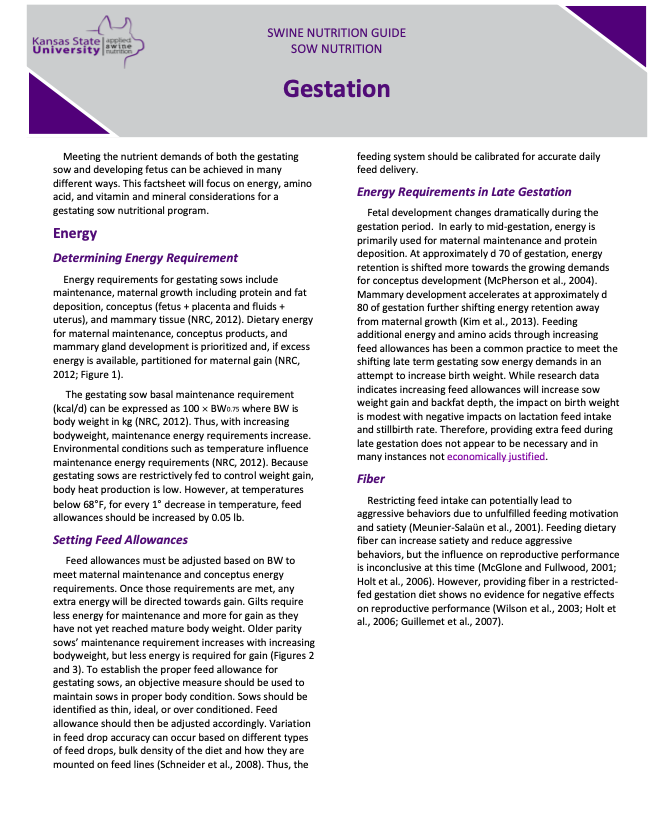Amino Acids
Amino Acids
Determining AA Requirements
Time- and energy-dependent maternal protein deposition for weight gain are the tissue pools that require the greatest amount of amino acids (Figure 4). Time-dependent protein deposition for maternal gain is greatest in the early part of gestation and this best represents the time that body protein reserves can be replenished from losses during lactation. Energy-dependent maternal protein deposition represents the relationship between energy intake and protein deposition. This type of maternal protein deposition can vary with parity as gilts will deposit more protein with increased energy intake as they have yet to reach mature body weight. This relationship will essentially be 0 in parity 4+ sows (Dourmad, 2008). Furthermore, fetal and mammary tissue growth are the next greatest need for amino acids. Amino acid requirements for these tissues begin to increase from d 60 until the end of gestation.
AA Requirements
Daily amino acid requirements can be calculated from these determinants and should be expressed on a g/d basis. From the desired feed allowances in gestation, amino acid levels can be set in diet formulation to meet the g/day requirement.
Limited research has focused on gestating sow amino acid nutrition. From this limited research, lysine has been the most extensively evaluated amino acid. The lysine requirement of gestating sows changes based on parity and stage of gestation. Gilts and younger parity sows willhave greater lysine needs to support maternal gain to achieve mature weight but this requirement decreases with older parity sows (Samuel et al., 2012). Furthermore, the lysine requirement increases from early to late gestation and this change is due to the demands required for fetal growth and mammary development. Providing increased dietary lysine in late gestation has the potential to positively influence sow performance and pig birth weight. From this data, it is recommended that gestating gilts and sows receive 11 to 13 g/d of SID lysine (Goncalves et al., 2016; Thomas et al., 2018).
After lysine levels are set, other amino acids relative to lysine can be calculated. Compared to lysine, limited research exists on other amino acid requirements and these recommendations are mostly based on modeling of amino acid use (Leveseque et al., 2011; Franco et al., 2014).
Because research has shown that amino acid requirements increase in late gestation, the concepts of phase-feeding and parity-segregated feeding have been proposed (Moehn and Ball, 2013). These concepts require the blending of 2 diets or increased movement of animals within the gestation barn to segregate by parity. Due to facility and logistical constraints, this can be difficult to implement. Therefore, most production systems will provide a single diet throughout gestation. (Table 1).
